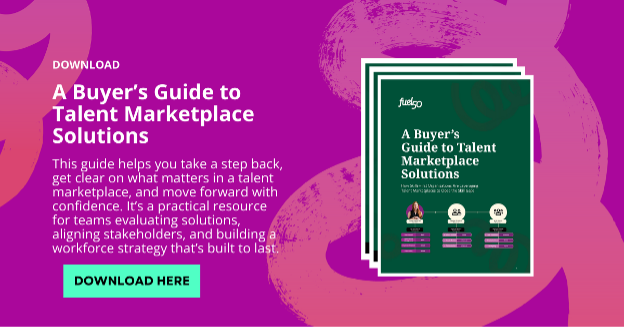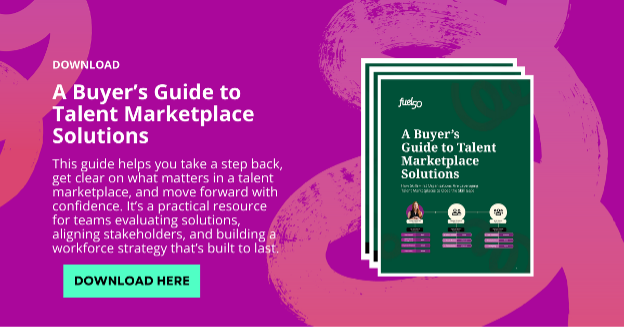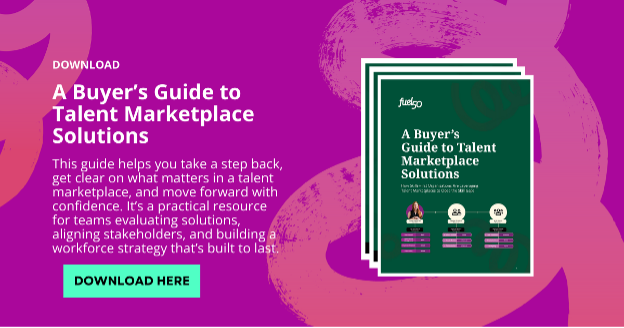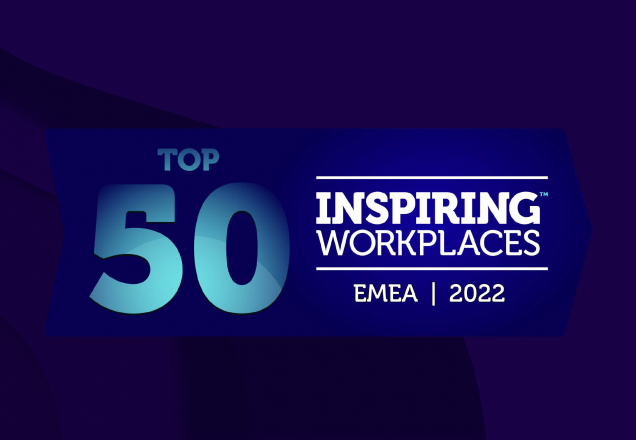
17th July 2025
Forget Hiring New Talent – Solving Your Retention Problem Is the Real Growth Lever

This article was written by our partners at Fuel50.
Everyone’s competing for the same shrinking talent pool.
Hiring pipelines are drying up, time-to-fill is stretching, offer decline rates are climbing, and even when you do land a candidate, the payoff isn’t guaranteed; many hires underdeliver or churn before adding real value.
But the deeper issue is that hiring won’t solve your skills problem.
You’re adding head count, but critical business gaps remain. Execution speed doesn’t improve, innovation stalls, and institutional knowledge walks out the door. The hiring treadmill keeps spinning, but the business doesn’t move faster.
That’s because the real constraint isn’t people, but retention, visibility, and internal mobility.
Most organizations already have the talent they need but lack the infrastructure to develop, move, and retain it. Skills go untracked, career paths are unclear, and growth conversations are sporadic or nonexistent. So, your best people disengage—first quietly, then completely.
While leaders throw more money into talent acquisition, internal capability quietly erodes.
Retention is no longer a soft metric. It’s your most scalable, cost-effective lever for growth in 2025. If you’re not building systems to keep and grow your talent, you’re just hiring into a leaky bucket.
In this piece, we’ll talk about how you should prioritize retention and explain how Avalere Health built a program that retained 98% of their workforce.
You’re over-investing in acquisition and bleeding talent out the back door
When most HR and business leaders talk about growth, the conversation usually starts (and ends) with hiring.
More roles, recruiters, and spend on employer branding and sourcing channels. Growth, in this mindset, means adding headcount.
But what’s rarely mentioned is that, while you invest time and budget filling the top of your talent funnel, your best people quietly slip out the bottom. Not because they’re disengaged or hate their manager, nor because a competitor paid more.
They leave because they can’t see what is next.
We see this repeatedly: High-performing talent stagnates in roles with no visibility into internal opportunities, no clear development path, and no signal that growth is possible beyond an annual performance review.
And you feel the cost whether you realize it or not. That churn creates a hidden (at first) tax on your entire organization:
- Recruiting costs go up.
- Institutional knowledge walks out the door.
- Morale drops as remaining teams absorb the workload.
- Retention issues scare off new candidates, creating a vicious cycle.
The irony is, the fastest, most cost-effective way to grow in 2025 isn’t adding more talent—it’s keeping and evolving the talent you already have.
That starts by reframing retention not as an HR metric but as a growth lever. Instead of being driven by pay or perks, it functions through perceived opportunity.
Employees need to visualize a future at your company. Otherwise, they’ll go build one somewhere else.
In the sections that follow, we’ll break down how to fix this, starting with why your current retention strategy is missing the mark, and how forward-thinking companies are solving it with development at the center.
Retention is about perceived opportunity
Tellingly, 53% of employees say they would take lower pay in exchange for better career development opportunities.
In a labor market where wage inflation is still a top concern, over half of your workforce is telling you, “We’d rather grow than earn more.”
That’s a sign of a structural shift in what people value at work and why they stay.
In the old model, retention was managed through compensation bands, flexible perks, and company culture slides in the annual report. Those elements still matter, but they’re table stakes now; they don’t differentiate you, nor do they drive long-term commitment from your high performers.
What does is a visible, believable path to growth inside the company.
We call this perceived opportunity—the sense that “I can get to where I want to go without leaving this organization.”
It’s about seeing skills progress, role mobility, mentorship, lateral expansion, and projects that stretch people’s capabilities and confidence. Yet, most companies aren’t measuring or managing this.
Instead, they throw more money at roles with high attrition, roll out generic training programs, or launch another engagement initiative without addressing the core question every employee is quietly asking: “Am I growing here?”
If the answer is unclear or feels out of reach, people will leave. Not because of bad managers or compensation, but because they can’t visualize forward momentum.
According to expectancy theory, motivation (and therefore engagement and retention) is driven by the belief that effort will lead to performance—and that performance will lead to meaningful rewards. If employees don’t see that connection, motivation collapses, as does loyalty.
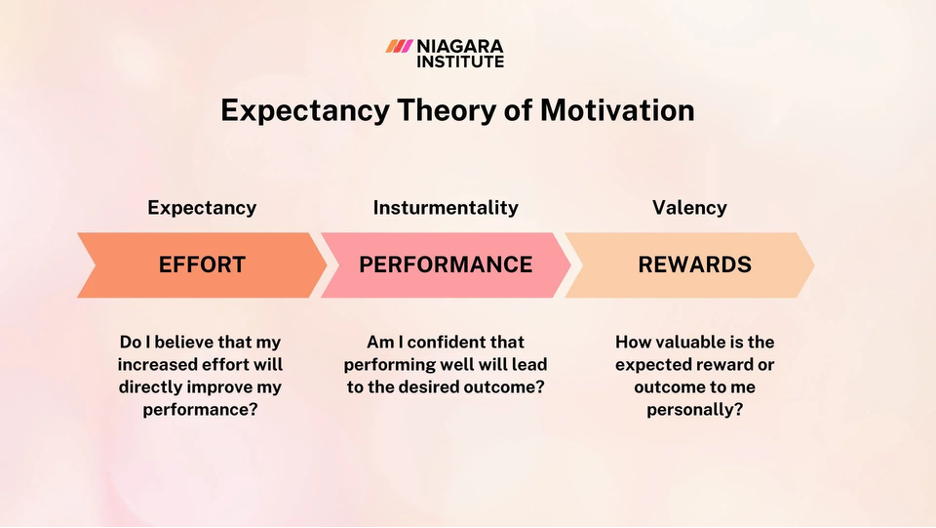
Source: Niagara Institute
That means if you want to retain your best people, you have to build and communicate a believable internal opportunity landscape. It must be as real, accessible, and aspirational as what recruiters are offering them elsewhere.
How to fuel your retention by instilling employee development
If you want to improve retention, stop treating development as a perk and start recognizing it as infrastructure.
Most companies have some development resources, such as a learning portal, a tuition reimbursement policy, or occasional training budgets. But those are passive, buried, and often disconnected from any meaningful career progression.
Employees don’t leave because they didn’t have access to one more Udemy license. They leave because development feels random, self-directed, and irrelevant to their real goals.
What actually fuels retention is development that’s visible, actionable, and tied to opportunity. It has to feel like momentum, not just content.
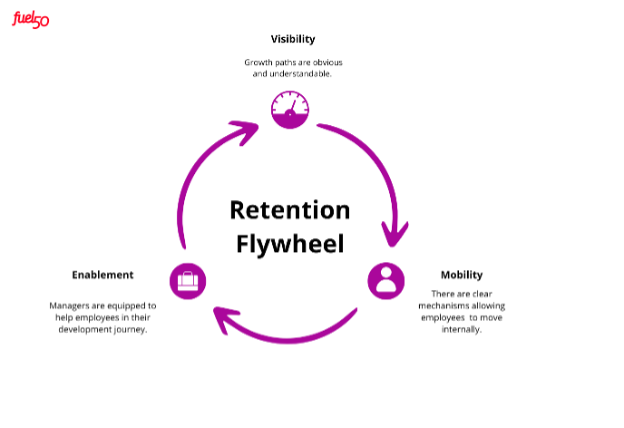
1. Visibility: Make growth paths obvious
If your employees can’t answer the question, “What’s next for me here?,” you have a visibility problem.
Too many companies rely on vague organizational charts, outdated job descriptions, or once-a-year career conversations to guide growth. But employees need clarity now: What roles could I move into? What skills do I need? Who’s done it before?
You fix this by mapping skills-based career paths and making them transparent. Show the “what,” “how,” and “why” of internal progression, especially outside of linear management tracks.
When people can see the next move, they stay.
2. Mobility: Create mechanisms for internal movement
Internal jobs boards are not a mobility strategy. Most are glorified listings that favor only the loudest or most confident employees.
Genuine mobility means removing friction—making it easy for people to explore roles, raise their hand for stretch projects, join short-term gigs, or shadow across departments without navigating politics or red tape.
This takes intent. It involves aligning leadership, HR, and managers to foster psychological safety around movement. It also means building infrastructure that tracks skills—not just roles—so people can pivot based on strengths and aspirations.
When mobility becomes a behavior, rather than just a policy, attrition drops, because people don’t have to leave to level up.
3. Enablement: Equip managers to coach
Development dies in the hands of untrained managers.
Most managers don’t block growth on purpose, they’re just under-equipped. They default to, “You’re doing great, keep it up,” because they don’t have data or frameworks to guide more strategic conversations.
You fix this by giving them tools: clear skills data, coaching templates, nudges, and visibility into potential next steps for each team member.
When managers become development advocates, you scale retention from the ground up.
Avalere Health: A case study on a company that reduced attrition by making internal mobility real
Avalere Health was growing fast, and their traditional talent strategy couldn’t keep up.
Like many organizations in highly specialized industries, Avalere Health found themselves stuck competing in a shallow talent pool. External recruitment was expensive. M&A brought in new teams, but not always the skills needed to scale. Despite aggressive hiring targets, they still faced attrition and capability gaps that threatened their growth plans.
That’s when Nick Holmes, VP of employee experience, made a fundamental shift: Instead of relying solely on the outside market, Avalere would unlock the potential of their internal one.
“Fuel50 is fundamentally critical to our professional development strategy. The people we’re competing with for the same talent pool won’t have anywhere near the same level of investment in career development that we will.”
— Nick Holmes, VP of employee experience, Avalere Health
Their new goal was to create a “super learning environment” where every employee could see a future, build the skills to grow into it, and move fluidly across the organization.
That meant transforming internal mobility from an abstract ideal into an accessible, daily experience. With Fuel50’s Talent Marketplace at the center, employees gained visibility into:
- Career paths they hadn’t considered
- Skill gaps they could close
- Projects and gigs aligned with their aspirations
- New internal roles they could explore without risking stability
This was the turning point. Once employees could see opportunity inside the organization and act on it, engagement shifted. Attrition slowed, and development became part of the daily culture, not an annual checkbox.
Fuel50 became the infrastructure behind that cultural shift. It aligned development with opportunity, created career transparency across functions and geographies, and allowed managers to engage in meaningful growth conversations, not just check-ins.
“When we implement Fuel50, you’ll have a completely different way to engage with your career, to see different opportunities, take on different skills, connect with people in different ways.”
— Nick Holmes
The result was a 98% retention rate.
How Fuel50 helps you keep your retention high
Fuel50 is more than a talent marketplace; it’s the infrastructure that allows modern HR and business leaders to put retention strategy into practice, at scale. By turning static systems into dynamic, AI-powered career ecosystems, Fuel50 helps you proactively retain, grow, and engage your workforce.
Let’s explore how.
Fuel50’s skills-based career architecture solves the visibility gap
One of the leading drivers of attrition is lack of career clarity. When employees can’t see what’s next, they start to look elsewhere.
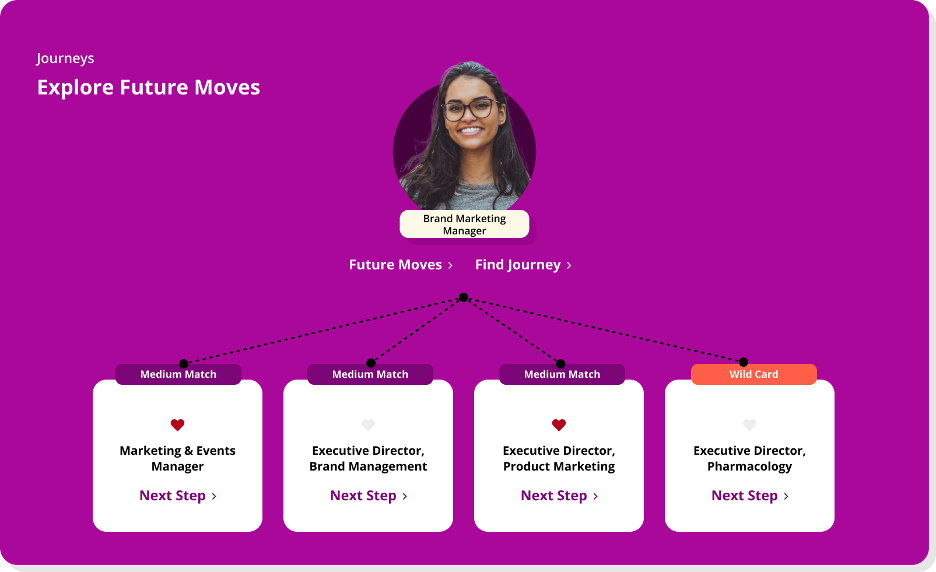
Fuel50 addresses this by giving every employee a personalized, skills-powered career path. Our platform maps your roles to the skills you need today and tomorrow, then show each employee their existing abilities, what they’re missing, and how to close those gaps.
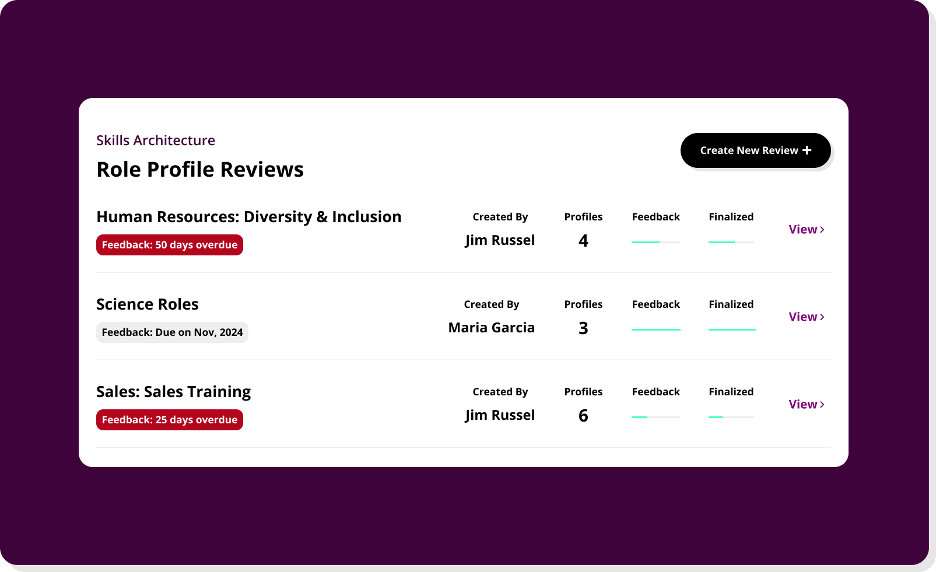
Instead of opaque job hierarchies or out-of-date organizational charts, Fuel50 provides real-time visibility into:
- Lateral, vertical, and diagonal moves within the business
- The skills needed for each role
- Personalized development paths tailored to employee aspirations
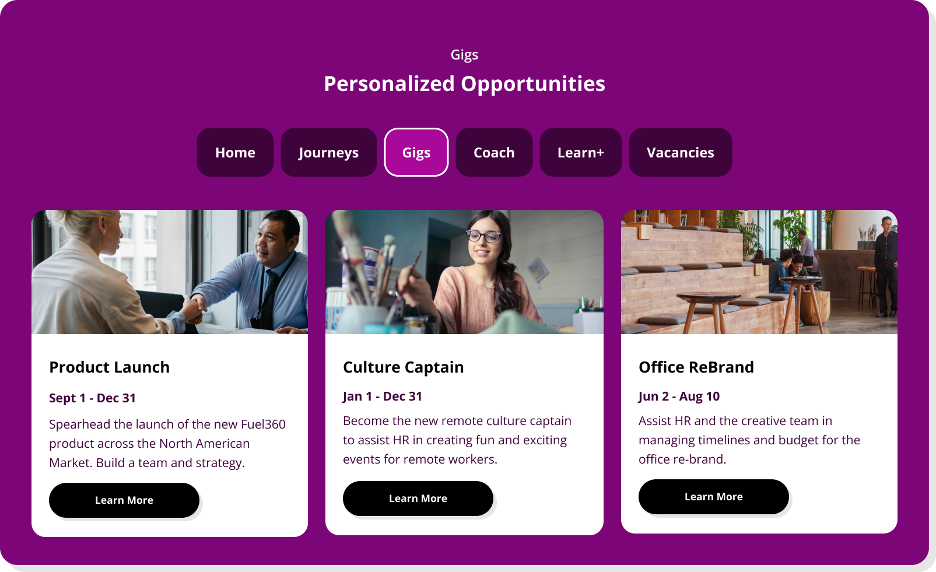
This turns internal mobility from an idea into a living system. It also helps organizations retain growth-hungry employees who are at risk of leaving when they feel stalled.
By spotlighting opportunities before disengagement sets in, Fuel50 helps you move from reactive backfilling to proactive retention.
Fuel50’s AI-driven matching engine powers personalized development
The problem with most L&D programs is a lack of connection. Employees are expected to navigate vast libraries without context, while managers have to coach without knowing what skills matter. Meanwhile, HR teams are left guessing who’s ready for what.
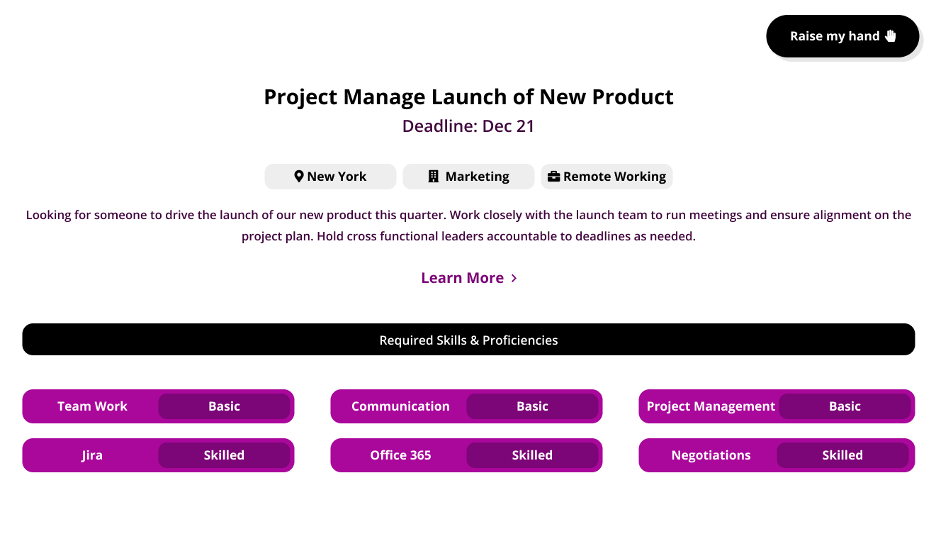
Fuel50 solves that disconnect with its intelligent matching engine. Every employee is matched in real time to:
- Internal roles that align with their skills and goals
- Learning opportunities that build toward those roles
- Gigs, mentorships, and stretch projects that provide applied experience
- Coaches who can help them navigate next steps
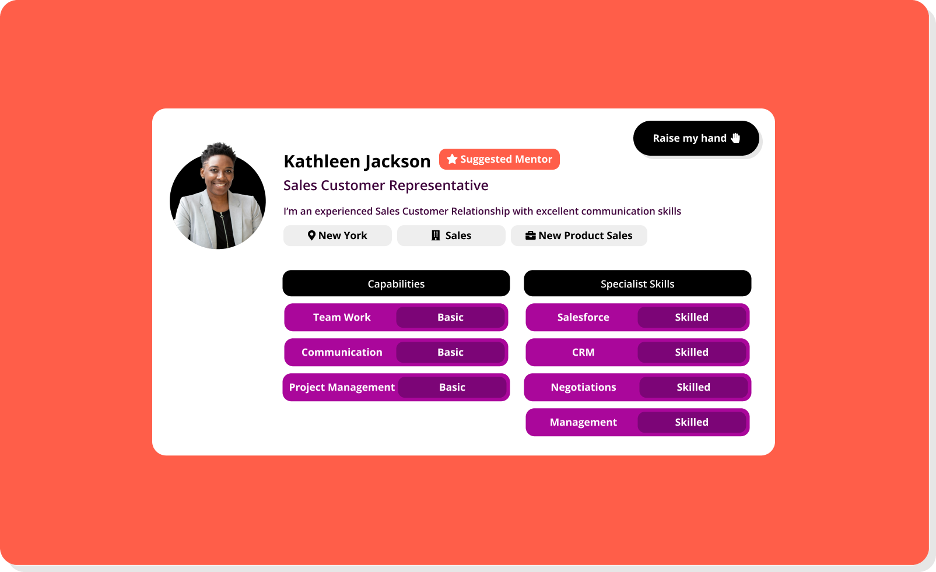
Instead of static matches, these relationships evolve as employees grow, your business priorities shift, and new roles emerge. That dynamism is what keeps the system relevant.
In practice, this means employees no longer see development as an abstract concept, but a clear path grounded in data and backed by opportunity.
Fuel50 equips managers with tools to lead career conversations
Every retention strategy lives or dies at the managerial level. Yet, most managers lack the tools, training, or confidence to guide career conversations with their teams.
Fuel50 changes that.
Inside the platform, managers can:
- See a snapshot of each employee’s current skills, career goals, and readiness for internal moves
- View recommended roles, gigs, and learning aligned with that employee’s aspirations
- Access guided conversation templates to support effective, development-focused one-on-ones
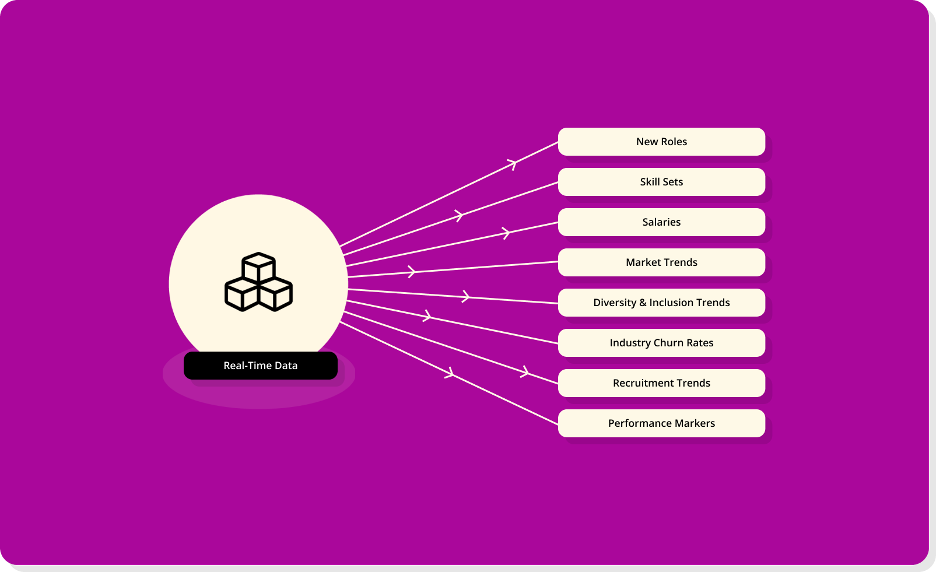
Rather than waiting for HR to initiate the conversation, Fuel50 enables managers to become proactive career coaches. They’re seen as advocates for growth, not just task assigners, which causes employee trust to increase dramatically.
Fuel50 integrates seamlessly into your existing HR tech stack
Retention efforts fail when they live in isolation. Thankfully, Fuel50 is built to integrate into the systems you already use, making it easier to embed talent mobility and career development into the flow of work.
Fuel50 integrates with:
- HCMs like Workday, SAP SuccessFactors, and Oracle HCM
- Learning platforms like Degreed, EdCast, and Coursera
- Performance and engagement tools like Culture Amp, Glint, and Lattice
These integrations ensure skill profiles are always up to date, development content is personalized and relevant, and mobility insights feed into your broader talent analytics strategy.
Instead of creating another siloed HR platform, Fuel50 acts as a connective layer that unites your systems around the employee journey.
Fuel50 makes retention a preemptive practice
Perhaps the most important strength Fuel50 offers is a mindset shift from reacting to attrition to preventing it.
Most organizations only find out they have a retention problem when their best people leave. With Fuel50 though, you can:
- Identify flight risks based on engagement, development velocity, and career stagnation
- Recommend roles, learning, or coaching to reengage high performers
- Give employees early, actionable insigths into how to grow where they are
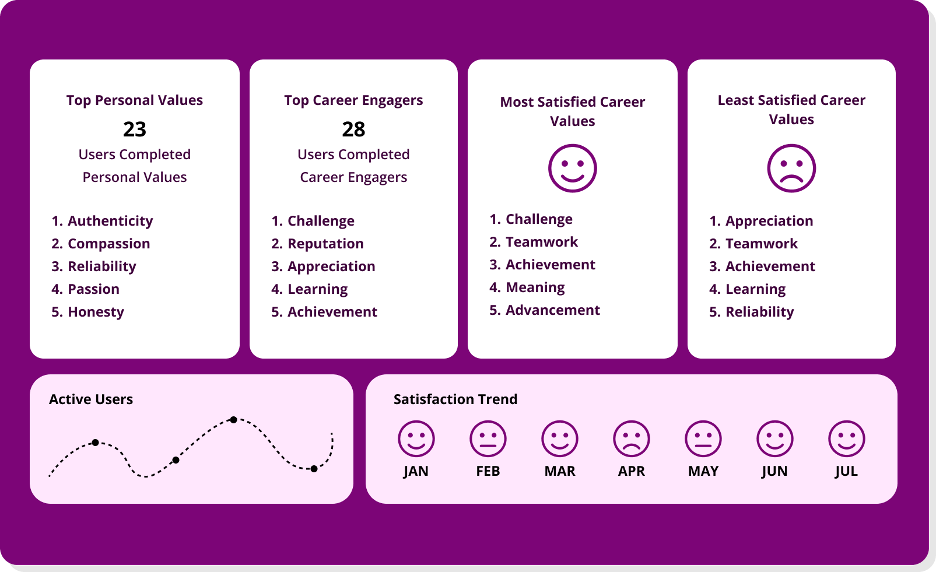
Instead of relying on exit interviews to diagnose what went wrong, you construct a system that makes it more beneficial to stay than to leave.
Fuel50 both measures risk and helps you mitigate it with timely, data-backed interventions that feel natural and personal.


